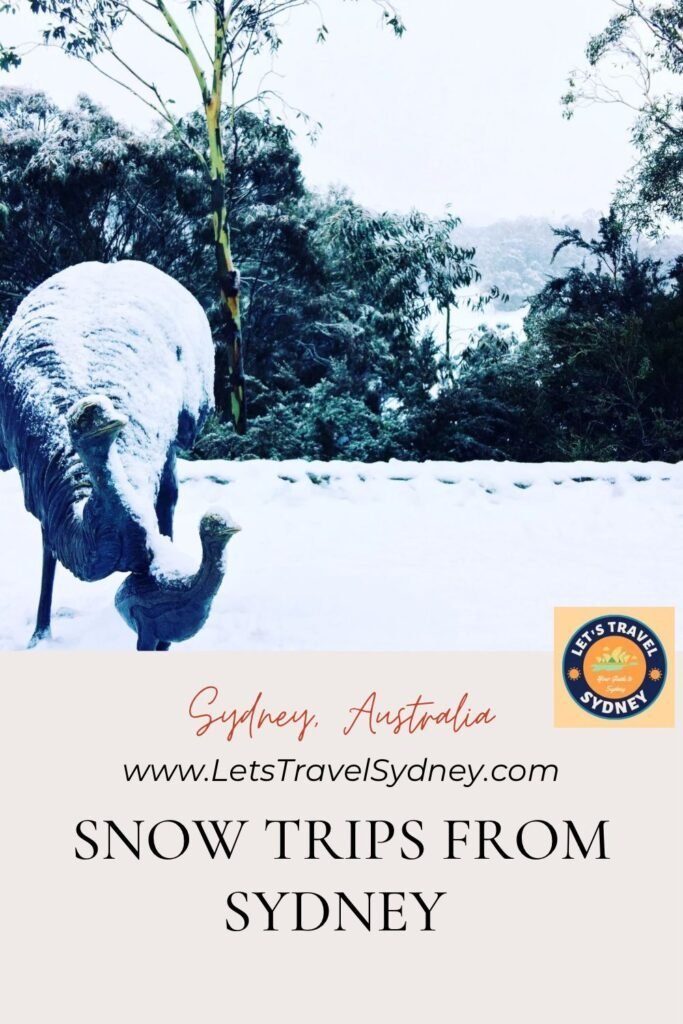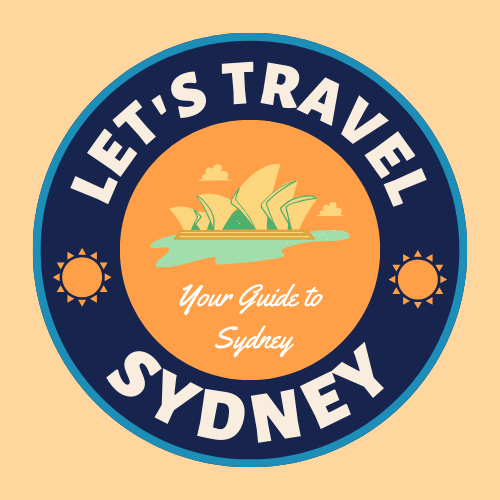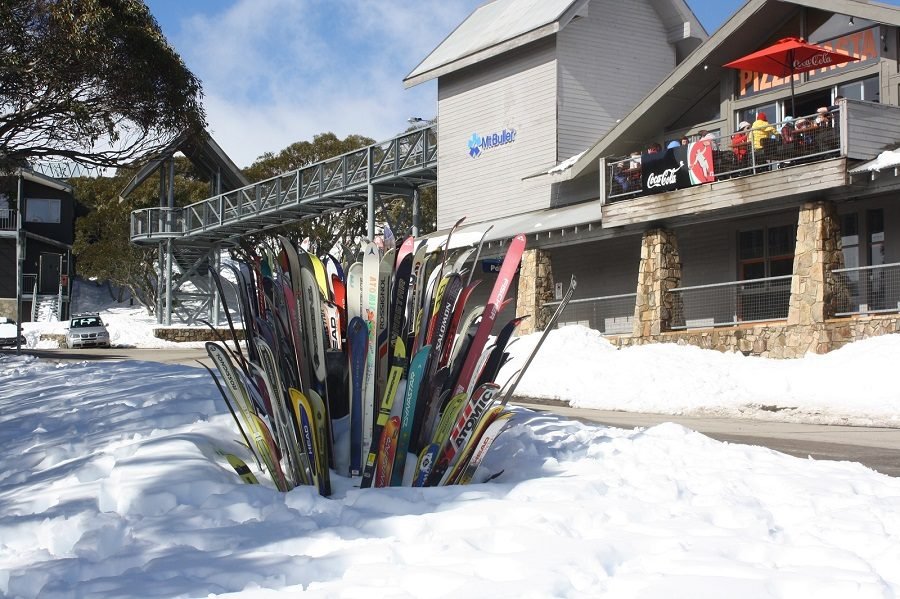Snow Trips from Sydney for 2025
The Snowy Mountains come alive as winter descends upon New South Wales (NSW) between June and August, transforming into a winter wonderland that beckons snow lovers and ski enthusiasts. In this post, you will find the best snow trips from Sydney that you can visit during this winter season.
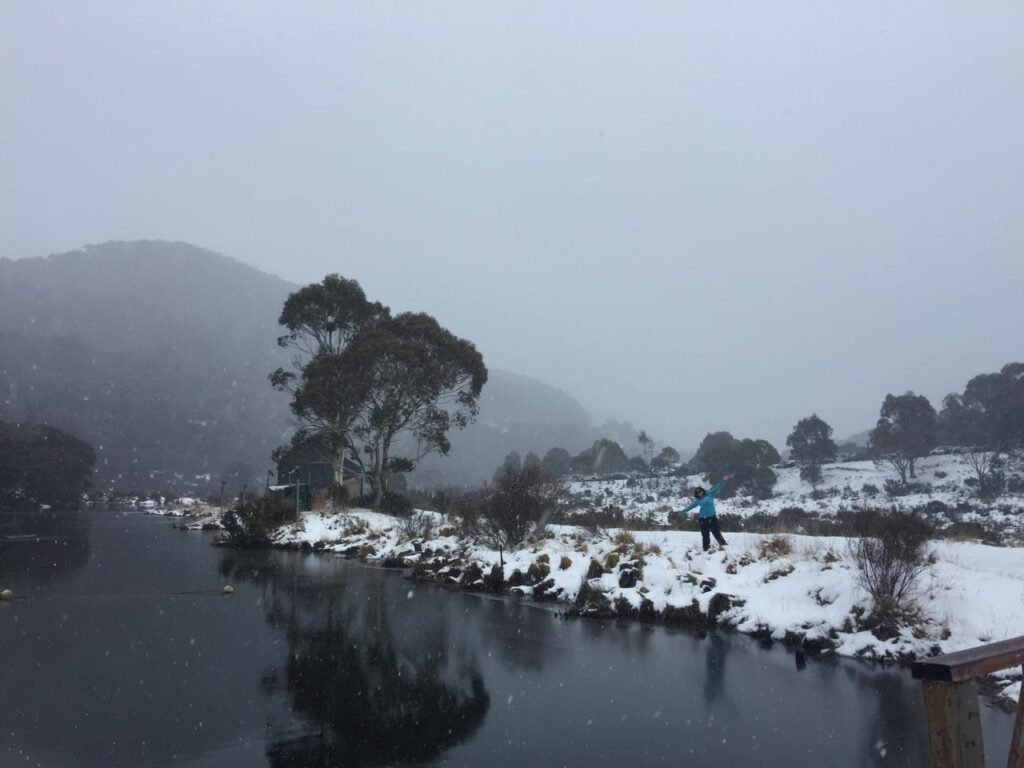
Having lived in Sydney for over a decade, I’ve eagerly anticipated this seasonal shift every year, venturing into the snow-capped peaks for brief and extended escapes. Whether the thrill of carving down the slopes on a snowboard, the joy of building a snowman, or the simple pleasure of sipping hot chocolate after a day on the slopes, the Snowy Mountains offer a magical retreat from the city’s hustle and bustle.
From one-day trips to multi-day adventures, my winters have been filled with unforgettable moments in this alpine paradise. I’ve taken ski lessons to hone my skills, enjoyed the camaraderie of friends during group trips, and cherished the solitude of solo explorations. Each journey to the Snowy Mountains adds a new chapter to my winter tales, making every season more special than the last.
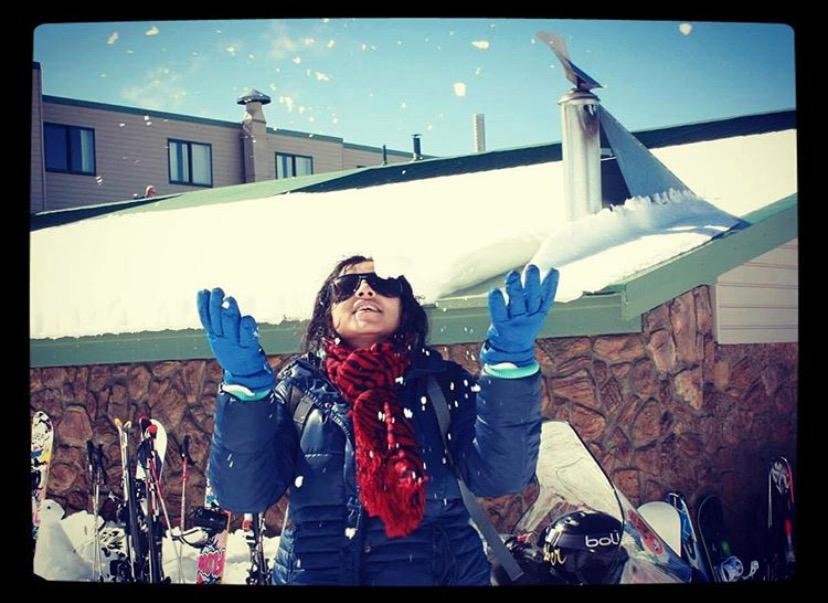
This article may contain affiliate links, meaning if you decide to purchase via my links, I may earn a commission at no additional cost to you. For complete information, please see our affiliate disclaimer here.
Snow Trips from Sydney
Laurel Hill
Laurel Hill is a small village in the Snowy Valley region of NSW. It lies approximately 13 kilometres south of Tumbarumba and is part of the scenic Snowy Mountains area. The village is known for its natural beauty and offers a range of outdoor activities and attractions that appeal to nature lovers and adventurers.
Laurel Hill was established in the late 19th century during the region’s gold rush period. It initially served as a hub for miners and their families. Over the years, it has transitioned into a quiet village that draws visitors for its tranquil environment and historical significance.
The best time to visit Laurel Hill is during the spring and autumn months when the weather is mild, and the natural scenery is most vibrant. Winter also offers a unique experience, with the possibility of snow adding to the charm of the village and its surrounding areas.
How To Get to Laurel Hill from Sydney?
Laurel Hill is accessible by road. It is approximately a 5-hour (450 kilometres) drive from Sydney and about 3 hours from Canberra. The closest major town is Tumbarumba, which can be reached via the Snowy Mountains Highway.
For public transportation, you can take a train in Southern NSW from Central Station in Sydney to Cootamundra and then take a bus from Cootamundra to Batlow Road in Laurel Hill. The entire journey takes about 9 hours.
Where to Stay in Laurel Hill?
While accommodation options within Laurel Hill itself might be limited, there are several excellent places to stay in the surrounding area.
- Tumbarumba Motel & Elms Restaurant: Located in Tumbarumba, about 20 minutes from Laurel Hill, this motel offers comfortable rooms with modern amenities. The on-site restaurant, Elms, is well-regarded for its delicious meals, making it a convenient option for travellers.
- Magenta Cottage: This charming cottage in Tumbarumba provides a cozy, home-like atmosphere. It’s ideal for families or small groups looking for a self-contained stay. The cottage features a fully equipped kitchen, a garden, and easy access to local attractions.
- Nimbo Fork Lodge: For a more luxurious stay, consider Nimbo Fork Lodge near Tumut, about 40 minutes from Laurel Hill. This lodge offers upscale accommodation with beautiful views of the Tumut River. It’s ideal for couples or those seeking a more indulgent retreat.
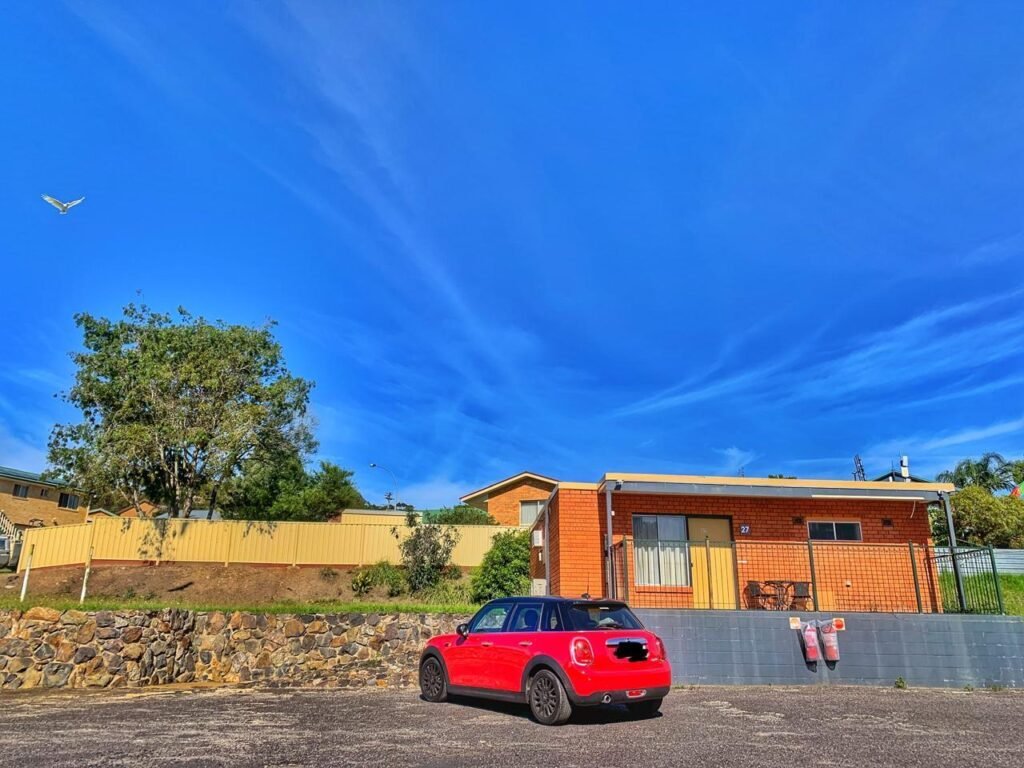
What to See in Laurel Hill?
Laurel Hill is a small village, so there are few things to see and do. However, you can enjoy a peaceful retreat within a short drive of the sightseeing places below.
- Pilot Hill Arboretum: Located just outside Laurel Hill, the Pilot Hill Arboretum is a must-visit for nature enthusiasts. It features a diverse collection of trees worldwide and offers picturesque walking trails and picnic spots.
- Sugar Pine Walk: One of the most popular attractions near Laurel Hill is the Sugar Pine Walk. This serene walk takes visitors through a forest of towering sugar pines, creating a cathedral-like canopy. It’s beautiful during the autumn and winter months.
- Bago State Forest: The nearby Bago State Forest provides numerous recreational opportunities, such as bushwalking, mountain biking, and bird watching. It’s an excellent place to explore the area’s natural beauty.
- Landers Falls Lookout: A trip to Landers Falls Lookout is recommended for stunning views of the surrounding landscape. The lookout offers panoramic views of the falls and the lush valleys below.
- Adelong Gold Mill Ruins: Situated within the Tumut region, Adelong Gold Mill Ruins is a heritage-listed site with ruins from the 1850s.
Thredbo
Thredbo is a renowned alpine village in the Snowy Mountains of NSW. Known for its ski resort and outdoor recreational activities, it is a year-round destination that attracts winter sports enthusiasts and summer adventurers.
Thredbo was established in the 1950s as a ski resort inspired by European alpine villages. Over the years, it has developed into one of Australia’s premier winter and summer holiday destinations. The village is in the Kosciuszko National Park, home to Australia’s highest peak, Mount Kosciuszko.
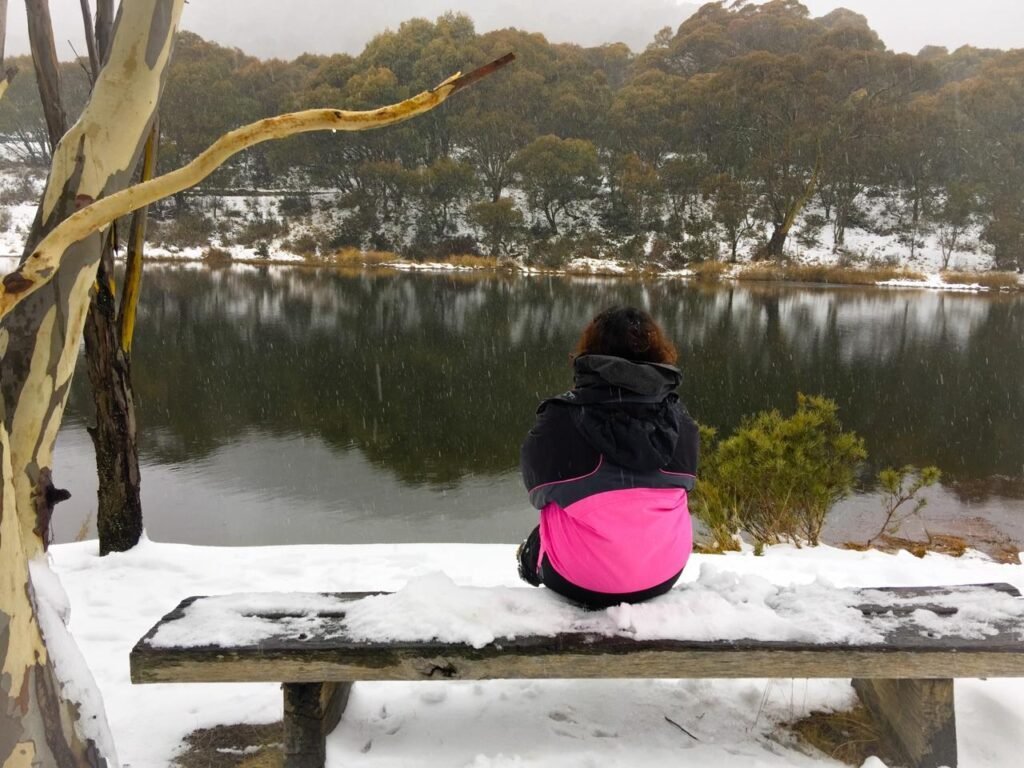
Thredbo is a versatile destination offering various activities and attractions throughout the year. The winter season between June and October is ideal for skiing, snowboarding, and other snow activities.
How To Get to Thredbo from Sydney?
Thredbo is accessible by road, approximately 500 kilometres southwest of Sydney and about 210 kilometres from Canberra. During the winter season, chains may be required for vehicles. Regular coach services also operate from major cities to Thredbo.
If you are looking for public transportation, you can take a bus operated by Greyhound Australia from Sydney to Thredbo. The journey takes around 7.5 hours.
Where to Stay in Thredbo?
Thredbo offers a range of accommodation options, from luxury lodges to budget-friendly hotels and self-contained apartments. The village also boasts a variety of dining choices, including cafes, fine-dining restaurants, and casual eateries.
- Thredbo Alpine Hotel: Located in the heart of Thredbo Village, this historic hotel offers comfortable rooms with mountain views. The hotel features several dining options, a bar, and a central location that provides easy access to the ski lifts and village amenities.
- The Denman Hotel in Thredbo: This boutique hotel offers stylish rooms and a cozy atmosphere. Guests can enjoy the on-site Terrace Restaurant, which offers fine dining with beautiful views of the mountains and a lively bar for après-ski drinks.
- Candlelight Lodge: A charming, European-style lodge offering comfortable rooms and suites with balconies overlooking the mountains. The lodge has a restaurant and bar, a sauna, and is just a short walk from the ski lifts.
- Ramshead Creek Apartments: These modern, self-contained apartments are perfect for families or groups. They offer full kitchens, laundry facilities, and spacious living areas. The location provides convenient access to the slopes and village centre.
- Snowgoose Apartments: Offering luxury self-contained apartments with stunning mountain and village views, Snowgoose Apartments are ideal for those looking for a more upscale experience. The apartments feature fully equipped kitchens, underfloor heating, and private balconies.
- Lhotsky Apartments: These well-appointed apartments offer a range of sizes, from studios to three-bedroom units, making them suitable for couples, families, or groups. Each apartment includes a kitchen and living area; some offer spa baths.
- YHA Thredbo Hostel: For budget-conscious travellers, Thredbo YHA Hostel provides affordable accommodation with private rooms and dormitories. The hostel features a communal kitchen and lounge area within walking distance of the ski lifts and village amenities.
What to See in Thredbo?
- Skiing and Snowboarding: Thredbo offers a variety of slopes suitable for all skill levels. It has the longest ski runs in Australia, and excellent snowmaking facilities ensure reliable conditions throughout the season.
- Snow Play: Thredbo offers other winter activities, such as snowshoeing and tobogganing, for those not keen on skiing or snowboarding. These activities are perfect for families and those looking to enjoy the snow more relaxedly.
- Après-Ski: The village has a vibrant après-ski scene with numerous bars, restaurants, and entertainment options. Visitors can unwind after a day on the slopes with good food, live music, and a warm atmosphere.
- Thredbo hosts numerous events and festivals throughout the year. The Snowy Mountains Music Festival and the Thredbo Blues Festival are notable highlights, attracting visitors for their lively music performances and unique alpine atmosphere.
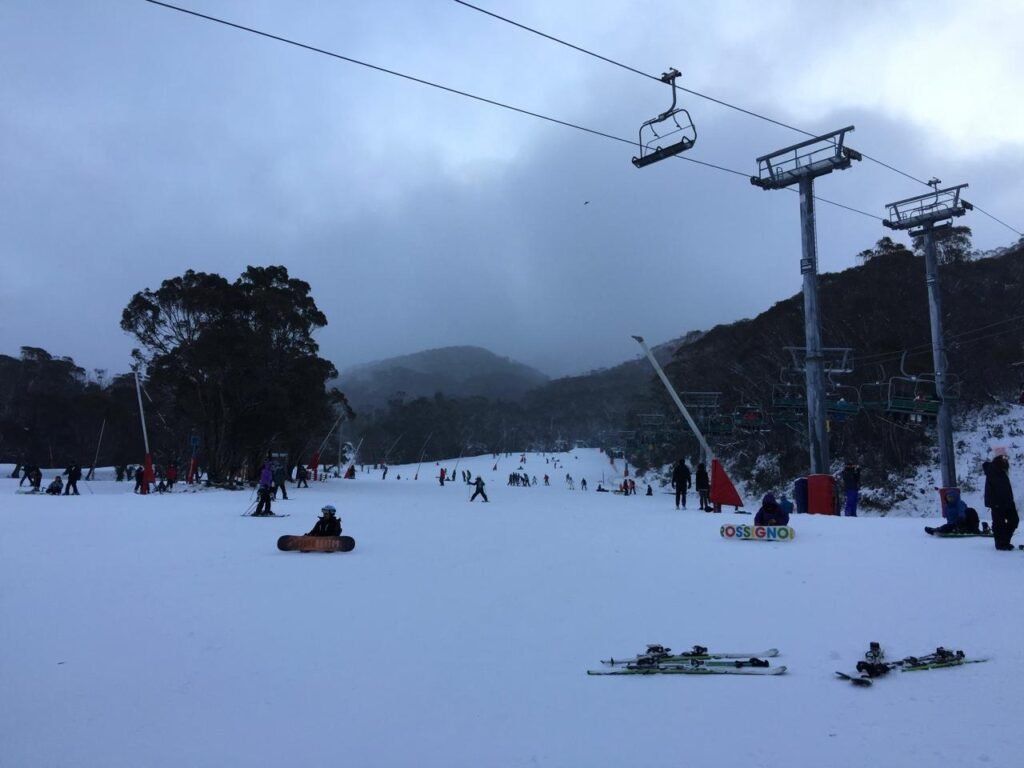
Perisher
Perisher is one of the largest and most popular ski resorts in Australia. It is located in the Snowy Mountains of NSW and encompasses four villages—Perisher Valley, Smiggin Holes, Blue Cow, and Guthega—each offering unique experiences and visitor facilities.
Perisher was established in 1995 through the merger of several smaller ski areas. It is situated within the Kosciuszko National Park, known for its stunning alpine scenery and diverse wildlife. The resort has become a premier destination for winter sports and outdoor activities in Australia.

Perisher is a premier destination for both winter sports and summer outdoor activities. Its expansive terrain, excellent facilities, and stunning scenery attract nature enthusiasts and adventure seekers year-round. Winter offers prime conditions for skiing, snowboarding, and various snow activities from June to October.
How To Get to Perisher from Sydney?
Perisher is accessible by road, approximately 500 kilometres southwest of Sydney and about 210 kilometres from Canberra. During the winter, visitors need to carry snow chains for their vehicles.
To use public transportation, travellers can take the Greyhound Australia bus from Sydney to Skitube—Bullocks Flat. The journey takes approximately 7 hours and provides a convenient destination option. Perisher Valley is around 700 metres from Skitube—Bullocks Flat.
Where to Stay in Perisher?
Perisher offers a range of accommodation options, from luxurious lodges to budget-friendly hotels and self-contained apartments. The villages have numerous dining establishments, including cafes, restaurants, and bars, providing various culinary experiences to suit all tastes.
- Perisher Valley Hotel: Situated in the heart of Perisher Valley, this hotel offers ski-in/ski-out access. Guests can enjoy comfortable rooms, a restaurant, a bar, and stunning views of the slopes. It’s ideal for those looking for convenience and a bit of luxury.
- Perisher Manor Hotel: At the Village Eight Express chairlift base, Perisher Manor offers easy access to the slopes. The hotel features various rooms, a restaurant, a bar, and a coffee shop.
- Snowy Gums Smiggins: It is located in Smiggin Holes and provides cozy rooms and self-contained apartments. It features a restaurant, bar, lounge area, and ski-in/ski-out access.
- Eiger Chalet: This family-owned chalet in Perisher Valley offers a range of rooms and apartments. Guests can enjoy the on-site restaurant, bar, and sauna. It’s known for its friendly atmosphere and great service.
- Matterhorn Lodge: In Perisher Valley, Matterhorn Lodge offers budget-friendly accommodation with various room types, including shared and private facilities. It features a communal lounge, bar, and restaurant.
- Marritz Hotel: Known for its affordability and charm, Marritz Hotel offers comfortable rooms, a restaurant, and an indoor heated pool. It’s a short walk from the ski lifts, making it convenient for skiers and snowboarders.
- The Stables Perisher: Offering luxurious ski-in/ski-out apartments and chalets provide convenience and comfort. Each unit features modern amenities, including a full kitchen, and some offer private hot tubs.
- Ski Rider Hotel: Located in the National Park, Ski Rider Hotel offers affordable accommodation with ski-in/ski-out access. It includes a shuttle service to Perisher Valley and has a restaurant and bar on-site.
What to See in Perisher?
- Skiing and Snowboarding: Perisher offers extensive skiable terrain, with over 1,200 hectares and 47 lifts. The resort caters to all levels of skiers and snowboarders, from beginners to advanced riders. It also features terrain parks and half-pipes for freestyle enthusiasts.
- Snow Tubing and Tobogganing: Families and those looking for a fun snow activity can enjoy snow tubing and tobogganing areas, providing an exciting alternative to traditional skiing and snowboarding.
- Cross-Country Skiing: Perisher has a network of cross-country skiing trails, which allow visitors to explore the scenic winter landscape at a slower pace. These well-groomed trails are suitable for all skill levels.
Charlotte Pass
Charlotte Pass is a picturesque alpine village and ski resort located in the Snowy Mountains of NSW. It is renowned for being Australia’s highest resort, situated at an elevation of 1,765 meters, and for its proximity to Mount Kosciuszko, the highest peak in Australia.
Charlotte Pass was named after Charlotte Adams, the first European woman to climb Mount Kosciuszko in 1881. The village and resort were established in the early 20th century, with the first ski lodge built in 1930. Over the years, it has become a popular destination for skiing, snowboarding, and summer outdoor activities.
Charlotte Pass is a unique and charming destination offering a variety of activities throughout the year. Its high elevation, stunning scenery, and range of outdoor pursuits make it a perfect spot for winter sports enthusiasts and summer adventurers.
How To Get to Charlotte Pass from Sydney?
Charlotte Pass is accessible by road, but during the winter months, the last leg of the journey must be completed by over-snow transport from Perisher Valley. The resort is approximately 500 kilometres from Sydney and 210 kilometres from Canberra. In summer, visitors can drive directly to the village.
For public transportation, you can take a bus operated by Greyhound Australia from Sydney to Jindabyne. The journey takes around 6.5 hours. Charlotte Pass is around 40 kilometres from Jindabyne.
Where to Stay in Charlotte Pass?
Charlotte Pass offers a range of accommodation options, including lodges, hotels, and self-contained apartments. The village has a selection of dining establishments, from casual cafes to fine-dining restaurants, catering to various tastes and preferences.
- Stillwell Hotel: This hotel provides comfortable rooms with stunning mountain views. It’s perfect for families and groups.
- Lucy Lodge: Lucy Lodge offers self-contained apartments that are great for families or groups looking for more space and independence.
- Rydges Horizons Snowy Mountains: This lakeside resort offers modern apartments with kitchen facilities, making it ideal for families and groups.
- Lake Jindabyne Hotel: Situated right on the shores of Lake Jindabyne, this hotel offers comfortable rooms with beautiful lake views.
- Alpine Resort Motel: This motel offers budget-friendly accommodation and a range of room types to suit different needs.
- Novotel Lake Crackenback Resort: For a luxurious retreat, this resort offers high-end accommodations with stunning lake and mountain views.
- Kookaburra Lodge: Kookaburra Lodge in Jindabyne is popular for visitors seeking comfortable and convenient accommodation in the Snowy Mountains.
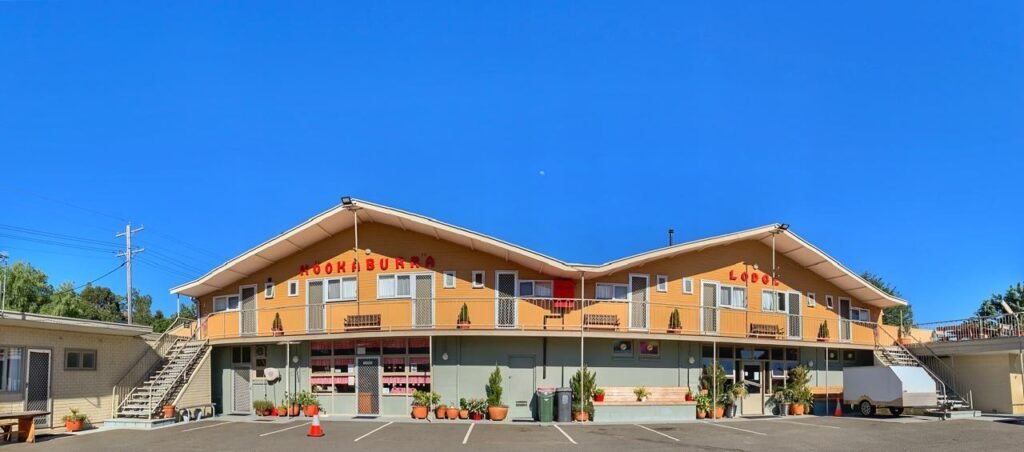
What to See in Charlotte Pass?
- Skiing and Snowboarding: Charlotte Pass offers a variety of ski runs suitable for all skill levels, from beginners to advanced skiers and snowboarders. The resort features five lifts, providing access to diverse terrain, including gentle slopes, challenging runs, and off-piste areas.
- Snowshoeing and Cross-Country Skiing: Snowshoeing and cross-country skiing are popular for those looking to explore the winter landscape slowly. The resort has dedicated trails that wind through the beautiful alpine scenery.
- Snow Play and Tobogganing: Families and children can enjoy designated snow play areas and tobogganing slopes, making Charlotte Pass an excellent destination for visitors of all ages.
The Blue Mountains
The Blue Mountains is a stunning region, approximately 60 kilometres west of Sydney. Known for its dramatic scenery, diverse wildlife, and rich Aboriginal heritage, the Blue Mountains is a popular destination for tourists and locals seeking outdoor adventure and natural beauty.
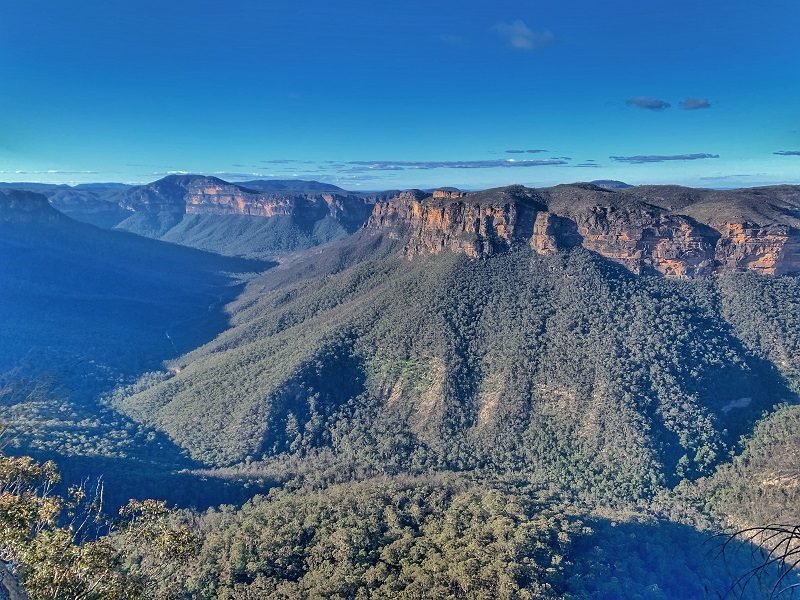
The Blue Mountains get their name from the blue haze created by the vast eucalyptus forests that cover the area. This phenomenon is caused by oil droplets released from the trees, which mix with dust particles and water vapour to scatter sunlight and create a blue hue.
The region has a long history of Aboriginal presence, with the Gundungurra, Darug, and Wiradjuri peoples being the land’s traditional custodians. European exploration began in the early 19th century, leading to the development of towns and infrastructure.
The Blue Mountains can be visited year-round, but the best times are spring (September to November) and autumn (March to May) when the weather is mild and the scenery is stunning. Winter offers the chance to experience crisp, clear days and the occasional snowfall, while summer is perfect for exploring the shaded trails and cool mountain air.
How To Get to The Blue Mountains from Sydney?
The drive from Sydney to Katoomba, the main town in the Blue Mountains, takes about 90 minutes (100 kilometres) via the Great Western Highway.
The Blue Mountains is easily accessible by car, train, or bus from Sydney. Regular train services run from Sydney’s Central Station to various towns in the Blue Mountains, providing a scenic and convenient travel option.
Where to Stay in The Blue Mountains?
The Blue Mountains offers many accommodations, from luxury resorts and boutique hotels to budget-friendly motels and campgrounds.
- Echoes Boutique Hotel & Restaurant Blue Mountains: Situated in Katoomba, this boutique hotel provides stunning views and modern amenities.
- Fairmont Resort & Spa Blue Mountains—MGallery by Sofitel: Located in Leura, this resort is within the World Heritage-listed Blue Mountains National Park.
- Mountain Heritage Hotel: This charming hotel with panoramic views of the Jamison Valley is in Katoomba.
- YHA Blue Mountains Katoomba: A budget-friendly hostel offering private rooms and dormitory-style accommodation.
- Flying Fox Backpackers: A cozy, social hostel with a friendly atmosphere in Katoomba.
What to See in The Blue Mountains?
- The Three Sisters: The Three Sisters is one of the most iconic landmarks in the Blue Mountains. This rock formation near Katoomba is a must-visit for its stunning views and cultural significance to the local Aboriginal people.
- Scenic World: Scenic World in Katoomba offers a range of attractions, including the Scenic Railway, the world’s steepest passenger railway, the Scenic Skyway, the Scenic Cableway, and the Scenic Walkway. These provide unique perspectives of the region’s dramatic landscapes.
- Echo Point: Echo Point is a popular lookout that offers panoramic views of the Jamison Valley and the Three Sisters. It’s an excellent spot for photography, and I appreciate the vastness of the Blue Mountains.
- Jenolan Caves: The Jenolan Caves are among the world’s oldest and most spectacular cave systems. You can explore the intricate limestone formations and underground rivers on guided tours.
- Bushwalking and Hiking: The Blue Mountains boasts an extensive network of walking trails, ranging from short, easy walks to challenging multi-day hikes. Popular trails include the National Pass, the Grand Canyon Walk, and the Six Foot Track.
- Leura Village: Leura is a charming village known for its boutique shops, cafes, and beautiful gardens. The Leura Mall and Everglades Historic House and Gardens are highlights of this picturesque town.
- Aboriginal Cultural Experiences: Visitors can learn about the Blue Mountains’ rich Aboriginal heritage through cultural tours, art galleries, and interpretive centres that offer insights into the traditional practices and stories of the region’s Indigenous peoples.
- The Blue Mountains hosts numerous events and festivals annually, celebrating its culture, arts, and natural environment. The Winter Magic Festival, Leura Gardens Festival, and the Blue Mountains Music Festival are notable events attracting visitors from all over.
Mount Buller
Mount Buller is located in Victoria, not New South Wales. It is one of Australia’s premier ski resorts and a popular year-round destination for outdoor enthusiasts.
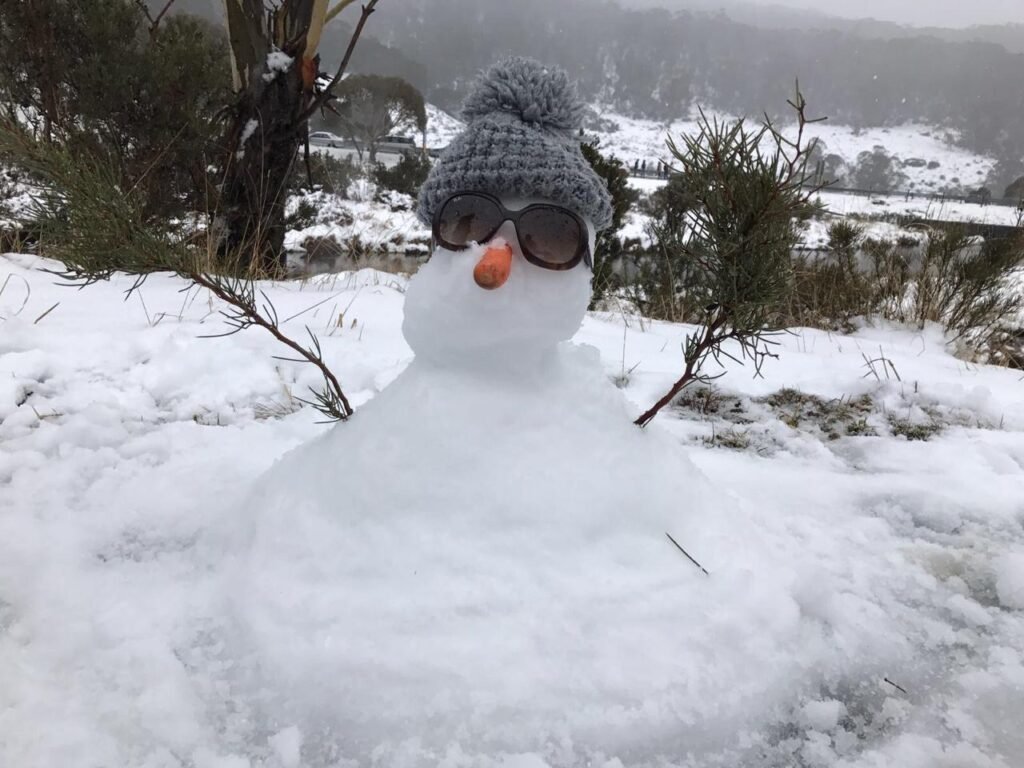
Mount Buller has a long history as a destination for winter sports. Skiing began on Mount Buller in the 1920s, and the area has since developed into a well-known resort with modern facilities and infrastructure. The village is set at about 1,600 meters, while the summit of Mount Buller reaches 1,805 meters.
Mount Buller is a versatile destination with various activities and attractions year-round. From June to October, winter is perfect for skiing, snowboarding, and other snow-related activities.
How To Get to Mount Buller from Sydney?
Mount Buller is the most distant snow trip from Sydney, spanning roughly 800 kilometres and an 8-hour drive. However, it is more readily accessible from Melbourne, a three-hour drive away. The nearest significant town is Mansfield, reachable by car in approximately 45 minutes.
For travellers from Sydney, the recommended route involves taking a train to Melbourne followed by a bus to Mount Buller. During the ski season, coach services run from Melbourne to Mount Buller, facilitating convenient transportation.
Where to Stay in Mount Buller?
Mount Buller offers many accommodations, including luxury lodges, hotels, and self-contained apartments. There are also more budget-friendly options, such as hostels and lodges.
- Buller Central Hotel: Located in the heart of Mount Buller village, this hotel offers modern rooms with convenient access to the slopes.
- Alpine Retreat Mt Buller: A comfortable and family-friendly lodge with various room types.
- Hotel Pension Grimus: A European-style boutique hotel with a cozy and welcoming atmosphere.
- Ski Club of Victoria—Kandahar Lodge: This lodge offers a variety of room types, from budget to more luxurious options, and is great for families and groups.
- Mt Buller Chalet Hotel & Suites: Luxury accommodation with stunning mountain views and modern amenities.
- Duck Inn Mt Buller: A modern and stylish hotel offering a range of room types, from standard to deluxe.
- Amber Lodge Mt Buller: Budget-friendly lodge offering basic but comfortable accommodation.
What to See in Mount Buller?
- Skiing and Snowboarding: Mount Buller is renowned for its extensive ski terrain, featuring over 300 hectares of skiable area and more than 22 lifts. The resort caters to all levels of skiers and snowboarders, from beginners to advanced riders, with various runs and terrain parks.
- Cross-Country Skiing: Several cross-country skiing trails offer a different way to explore the snowy landscape. These trails provide a serene and scenic experience away from the busier downhill slopes.
- Snow Play and Tobogganing: Mount Buller is a family-friendly destination with snow play and tobogganing areas designed for safe and fun snow activities.
- Après-Ski: The village offers a vibrant après-ski scene with numerous bars, restaurants, and cafes where visitors can relax and enjoy good food and drink after a day on the slopes.
Closing Notes
As the winter season draws to a close, there’s still time to seize the snowy adventures awaiting in the Snowy Mountains. Whether you’re a seasoned snow enthusiast or looking to experience the magic of snow for the first time, now is the perfect opportunity to plan your trip.
Embrace the thrill of skiing, the tranquillity of snowshoeing, or the joy of building a snowman. Don’t let the winter pass you by without experiencing the wonder of the Snowy Mountains. Start planning your snowy getaway today and create memories that will last a lifetime.
How Can You Support Me?
You know I love coffee, so you can buy me a coffee – Buy Me Coffee!
If you enjoyed reading this article, please comment, share, and tweet so others can enjoy it.
Do you have any questions or suggestions? Or do you want to chat? You can write to me at LetsTravelSydney@gmail.com.
PIN for later reference – Snow Trips from Sydney

